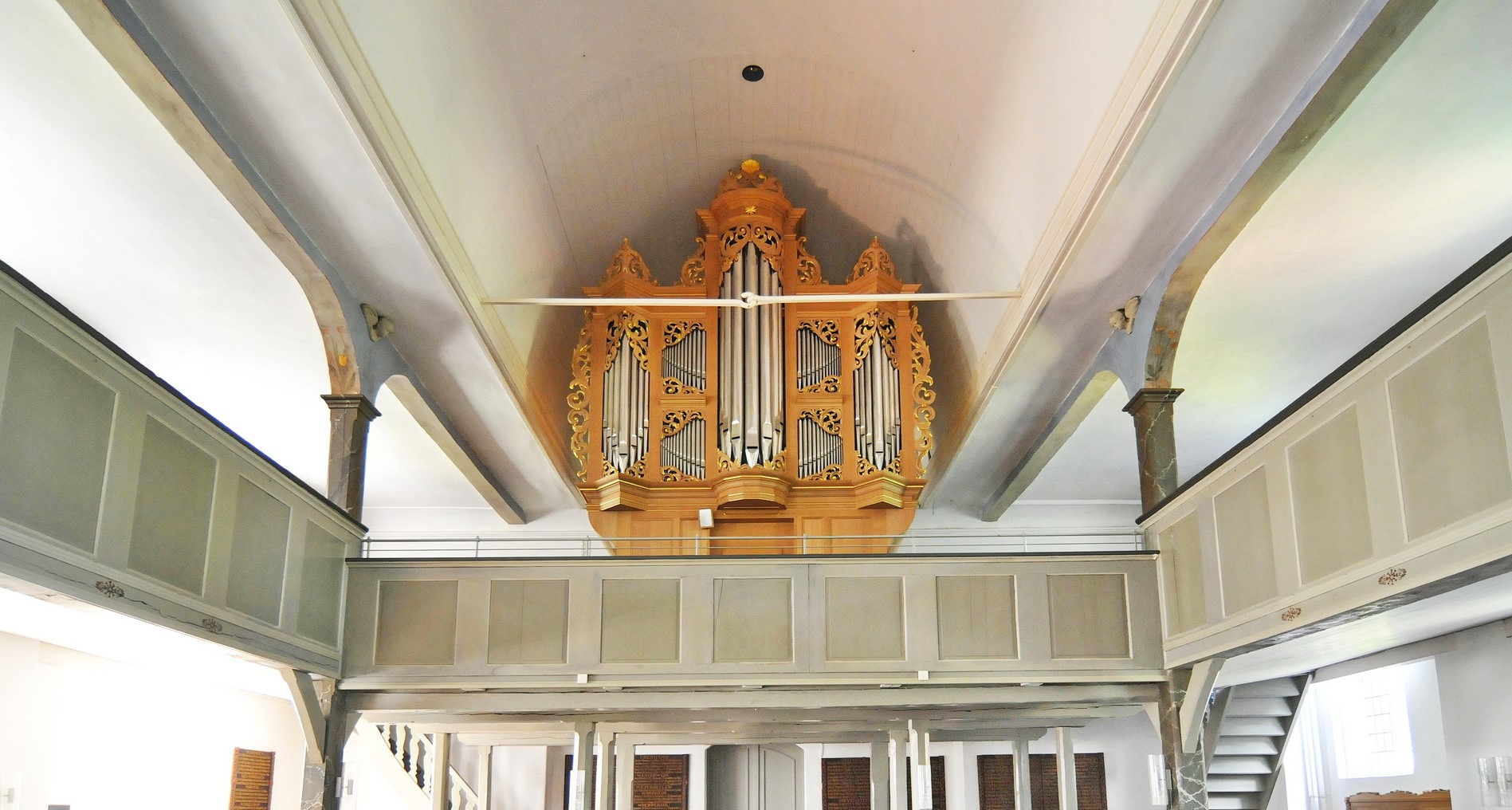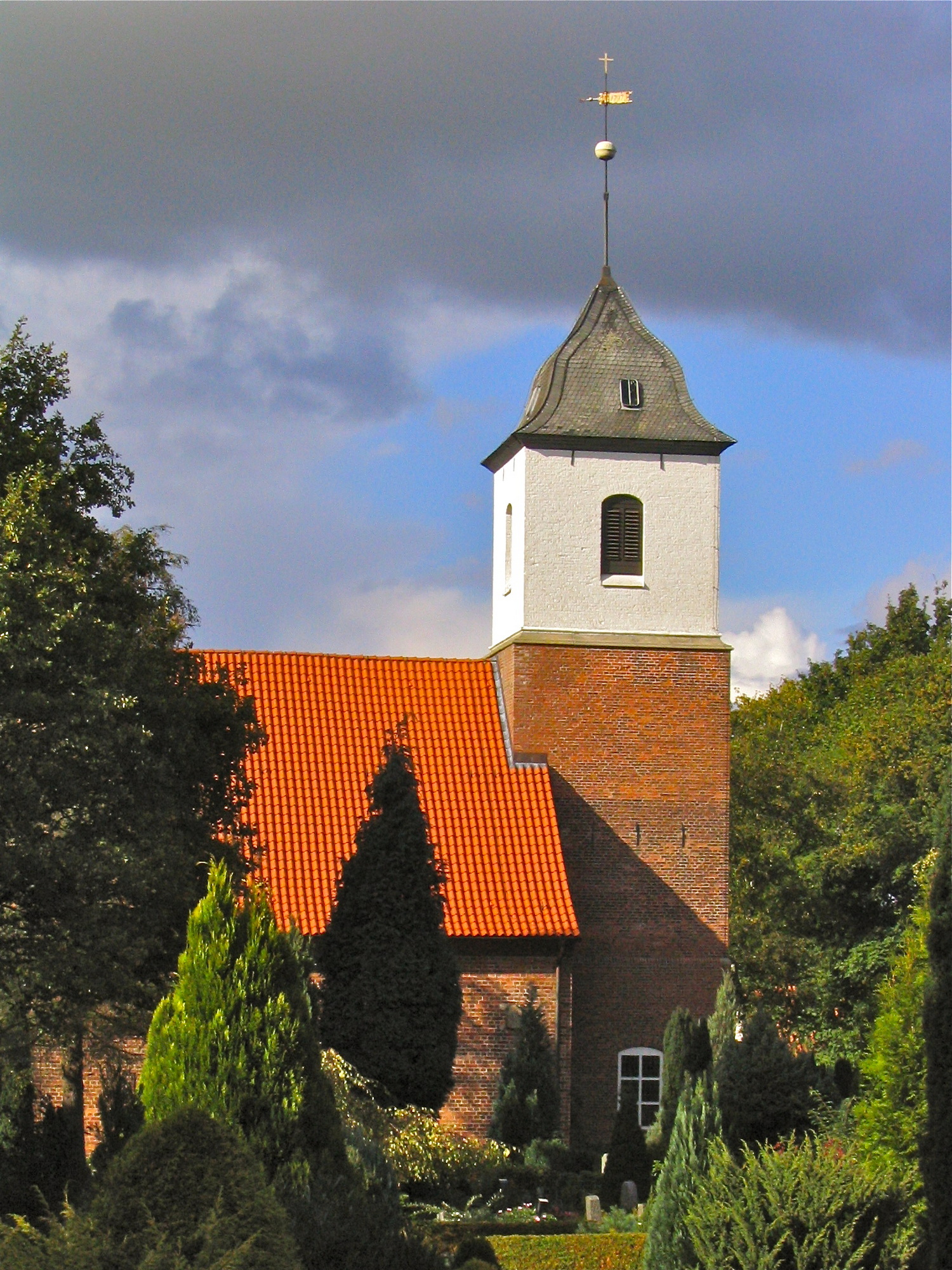Worpswede, Zionskirche
| Builder | J. Ahrend |
|---|---|
| Year | 2012 |
| Period/Style | Baroque |
| Stops | 22 |
| Keyboards | 2+P |
| Keyaction | tracker/mechanical |
Since 1762, organ music has resonated within the walls of the Zionskirche in Worpswede, starting with the first organ built by Dietrich Christoph Gloger. This original organ underwent significant modifications and served the community until the end of the 19th century, managing to retain its original disposition through fortunate circumstances. In the 20th century, subsequent organs replaced Gloger's, including a 1958 Führer organ, which quickly became prone to repair issues. As a result, the church council, following expert advice, decided in 2004 to commission a new organ, which was built by the firm Jürgen Ahrend Orgelbau and inaugurated in March 2012.
The new Ahrend organ, designed in a classic style with two manuals and a pedalboard, integrates traditional and contemporary elements to enhance its musical expression and functional longevity. It features registers like Quintadena, Principal, and Trompete, among others, arranged to provide a rich and versatile sound palette suitable for a variety of musical pieces. The organ's mechanical features include manual and pedal couplings, a tremulant for vibrato effects, a Cimbelstern for adding a starry sound texture, and even a feature called Vogelgesang for imitating bird sounds, showing a blend of historical craftsmanship and modern innovation. This installation not only continues the church's long-standing musical tradition but also revitalizes it with new technological advancements and sound capabilities.
The new Ahrend organ, designed in a classic style with two manuals and a pedalboard, integrates traditional and contemporary elements to enhance its musical expression and functional longevity. It features registers like Quintadena, Principal, and Trompete, among others, arranged to provide a rich and versatile sound palette suitable for a variety of musical pieces. The organ's mechanical features include manual and pedal couplings, a tremulant for vibrato effects, a Cimbelstern for adding a starry sound texture, and even a feature called Vogelgesang for imitating bird sounds, showing a blend of historical craftsmanship and modern innovation. This installation not only continues the church's long-standing musical tradition but also revitalizes it with new technological advancements and sound capabilities.
| Hauptwerk | Positiv | Pedal |
|---|---|---|
| Quintadena 16' | Gedact 8' | Subbass 16' |
| Principal 8' | Flöte 4' | Octave 8' |
| Gedact 8' | Fugaris 4' | Octave 4' |
| Octave 4' | Gemshorn 2' | Mixtur 3f |
| Flöte 4' | Sesquialtera 2f | Posaune 16' |
| Nasat 2 2/3' | Scharff 3f | Trompete 8' |
| Octave 2' | Dulcian 8' | |
| Mixtur 4f | ||
| Trompete 8' |
No Video/Audio samples available.
https://nomine.net/orgel/worpswede-zionskirche/
 Pipe Organ Map
Pipe Organ Map
